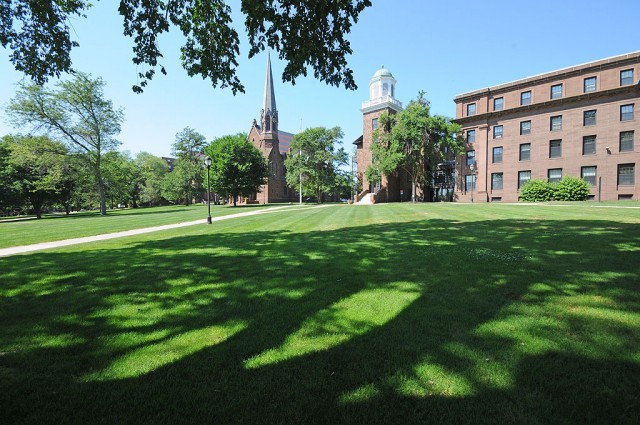Finding Hope in 30 Years of Struggle for Reproductive Justice

By Victoria Pitts-Taylor, professor and chair of Feminist, Gender, and Sexuality Studies

In May this year I attended a reproductive freedom protest organized by Wesleyan University students. We were taking part in a nationwide campus walkout after the draft Supreme Court decision overturning Roe v. Wade was leaked.
Using the inclusive, intersectional language of reproductive justice, speakers at the rally advised the crowd how to get abortion access through medication by mail, how to help others attain abortions across state lines, and how to fight for legal protections at the state and national level if Roe was overturned. They were motivated and inspiring.
As we rallied in defense of Roe v. Wade, I couldn’t help but think back to 1992, when as an undergraduate at Ohio University, I joined hundreds of my classmates taking buses to Washington D.C. to attend the March for Women’s Lives organized by the National Abortion Rights Action League. Officials named it one of the largest marches in D.C. history. Gloria Steinem, already a veteran of the women’s rights movement, spoke at the event, as did Jane Fonda, Jesse Jackson, and Faye Wattleton, the first African-American president of Planned Parenthood.The Supreme Court had already upheld the discriminatory Hyde Amendment in 1980, which banned the use of federal Medicaid funds for abortion. We were worried that spring that the Court would overturn Roe in an upcoming case called Planned Parenthood v Casey.
That year the Court upheld Roe. Yet in its ruling on Casey, the Court also allowed most of Pennsylvania’s Abortion Control Act limiting abortion access to stand. While the Court rejected a spousal consent provision as unconstitutional, it allowed other restrictions, and gave the green light to states to regulate abortions even in the first trimester, so long as they did not add an ‘undue burden.’
Over the next three decades, the ‘undue burden’ standard would be tested again and again by an onslaught of laws attempting to block access from every possible angle. Conservative legislators tried everything they could think of – bans on particular methods, requirements that providers have hospital admitting privileges or practice only in surgical centers, bans on clinics that were located near schools, longer waiting periods, forced ultrasounds, and fetal burial mandates, to name a few.
Local rallies and national marches for abortion rights and reproductive justice continued, but the pace of anti-abortion activism and legislation was relentless. In just a three-year span from 2011 to 2013, more than 200 state-level restrictions were put in place; by 2022, 1,381 restrictions had been instituted since Roe was first decided. Such restrictions affected low income people, young people, and members of marginalized communities the most, rendering abortion out of reach for many of them. As Planned Parenthood put it, “Whether you could actually get an abortion depends on your race, as well as how much money you have, your health insurance status, and your ZIP code.”
Despite its failure to truly protect reproductive freedom, the Supreme Court was still considered a last line of defense for abortion rights. In Whole Woman’s Health v Hellerstedt (2016) the Court affirmed both the constitutional right to abortion and the undue burden standard, and rejected two Texas provisions that would make abortion care extremely difficult to deliver. In 2020 the Court struck down a similar Louisiana law. The judicial landscape was shifting, though, and the GOP had been packing the lower courts with anti-abortion judges.
The Trump Administration’s appointment of three right-wing justices to the Supreme Court beginning in 2017 emboldened lawmakers across the country. In 2021 legislators in Texas passed a ‘bounty-hunting scheme’ that enabled private citizens – anyone – to sue to block abortion at six weeks of pregnancy and to reap monetary rewards for doing so. The SB 8 law effectively ended access to legal abortions in the state of Texas. It also incentivizes the surveillance of pregnant people (or anyone suspected of being pregnant), subjects anyone who helps a person get an abortion (even by donating funds or giving a ride) to harassing and expensive civil action, and reaches well beyond the borders of Texas. That law still stands after the Supreme Court dismissed most of the ACLU’s challenge to SB 8 late last year. Though Texans needing abortions were at first looking to neighboring Oklahoma for abortion care, an even more extreme bill was recently passed in Oklahoma.
By the time of last week’s Court decision in Dobbs v. Jackson overturning Roe, the availability of abortion was already extremely limited. And with the Dobbs decision and state ‘trigger’ laws set to go into effect with the overturning of Roe, 22 states now have early-term or near-total abortion bans. Dobbs is a devastating ruling that allows states to deny reproductive rights and to do considerable harm. Abortion restrictions endanger the mental and physical health of people who want an abortion, increase mortality rates (especially for Black women), increase poverty and unemployment for those denied abortions, and harm the most vulnerable individuals, families and communities. The Dobbs ruling also paves the way for a national abortion ban.
A few weeks after the Wesleyan rally, with the demise of Roe imminent, Gloria Steinem spoke at Wesleyan University’s commencement, where she received an honorary doctorate at the age of 88. Steinem gave an optimistic speech, citing Black Lives Matter and Bans Off Our Bodies as hopeful signs of this generation’s “democratic consciousness.” The reproductive justice movement, exemplified by organizations like New Voices, SisterSong, and National Latina Institute for Reproductive Justice, work to foster community mobilization around healthcare access, reproductive autonomy, and economic justice. They are seeing a groundswell of grassroots support and fundraising as protests sweep the country in defense of reproductive freedom.
It is incredibly dispiriting that Roe v Wade has been overturned, but elders in the movement know to look to collective action to find hope and fuel optimism.

